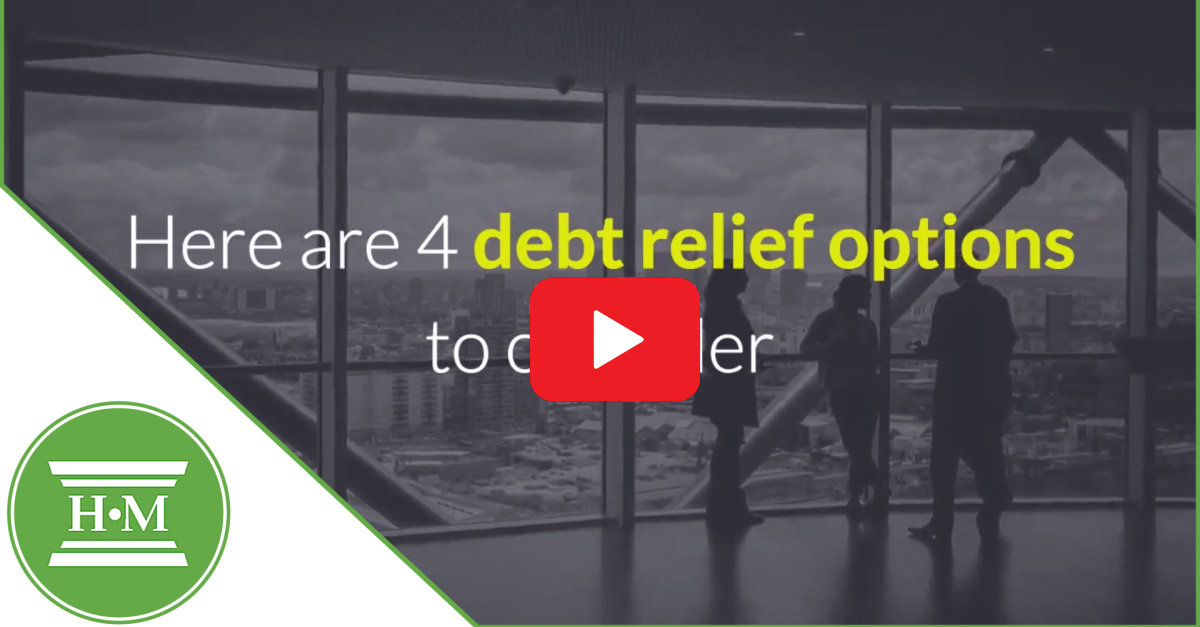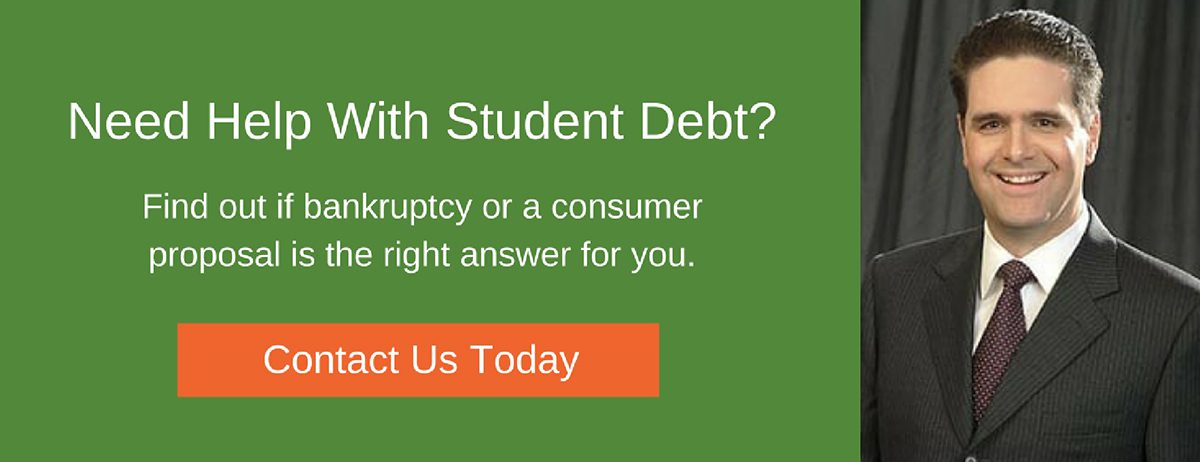For many Canadians, student loans are a necessary investment in their future. However, managing this debt can sometimes become challenging. Learn how to resolve student loans with answers to commonly asked questions about student loan relief options in Canada, including forgiveness programs, repayment assistance, and what to do if you’re struggling with payments.

Understanding Canadian Student Loans
Q: What are Canada Student Loans?
Canada Student Loans are financial assistance provided by the federal government to help students pay for post-secondary education. These loans are administered by the National Student Loans Service Centre (NSLSC) and are available to both full-time and part-time students who demonstrate financial need.
Some students use private student loans to finance their education in addition to government of Canada student loans. Private student loans can include lines of credit, credit cards, or bank loans specifically designed for students. Private loans are typically offered by banks, credit unions, or other financial institutions. Unlike government student loans, private loans often have higher interest rates and less flexible repayment terms.
Q: How much does the average Canadian owe in student debt?
According to recent statistics, the average Canadian graduate owes approximately $28,000 in student loans. Almost half of Canadian graduates financed their post-secondary education with student debt. Graduates who used both government and private student loans were the most indebted, owing twice as much as those who only borrowed from one source.
Q: What happens if you don’t pay your student loans?
If you don’t pay your Canada Student Loans for 270 days, they are considered in default and transferred to the Canada Revenue Agency, which can use enhanced collection powers, including wage garnishment, bank account freezes, and withholding tax refunds, to recover the debt.
Q: When should I seek help with student loan debt?
You should seek help with your student loan debt if:
-
You’re having trouble making your monthly payments
-
Your debt is causing significant stress or impacting your quality of life
-
You’re considering options like a consumer proposal or bankruptcy
-
You want to explore forgiveness or repayment assistance options
The problem with student debt is that it takes many years to repay. Roughly one-third of graduates are able to repay their loans within three years, but the average student takes over 10 years.
The average person we help with student debt is 35 years old. Student debtors represent 15% of people we help each year, but student loans account for only 30% of their overall unsecured debt. Repayment becomes a burden when graduates incur other debts, including credit card debt, payday loans, and car loans, that can lead to insolvency.
Contact us for a free, no-obligation consultation to discuss your best options for helping with student loan debt.
Canada Student Loan Forgiveness Programs
The following summarizes government programs offering student loan forgiveness or debt relief.
Q: What student loan forgiveness options are available in Canada?
There are two forms of student loan forgiveness in Canada, including potential forgiveness after 10 years of enrollment in the Repayment Assistance Plan (RAP) or the option to include student loans in a consumer proposal once they are 7 years old from your last date of study.
Depending on your situation and how much relief you need, here are the student loan assistance programs to consider:
-
Canada Student Loan Forgiveness for Family Doctors and Nurses
-
Severe Permanent Disability Benefit
-
Provincial loan forgiveness programs (vary by province)
Repayment Assistance Options
Q: What is the Repayment Assistance Plan (RAP)?
The Repayment Assistance Plan (RAP) is a program designed to help borrowers who are having difficulty repaying their Canada Student Loans. RAP makes managing student loan repayment easier by reducing your monthly payment to an affordable amount based on your family income and size. Both full-time and part-time students can access RAP, although the calculations for assistance amounts may differ. This assistance program offers loan forgiveness to family doctors, residents in family medicine, nurse practitioners, and nurses who work in underserved rural or remote communities. Effective November 2023, eligible doctors can receive up to $60,000 in loan forgiveness and up to $30,000 for eligible nurses and nurse practitioners.
Most student debtors will be eligible for reduced student loan payments. Only if your income is below a certain threshold will your payments be eliminated. To be eligible, your loan must be in good standing, and you cannot be in default (9 months or more overdue). To apply log in to your NSLSC account and complete the online application.
If you need full student loan debt relief or your student loans are in collection, consider a consumer proposal or bankruptcy.
Bankruptcy and Consumer Proposals
Q: Can student loans be included in bankruptcy in Canada?
Student debt is automatically discharged in bankruptcy in Canada if you have ceased to be a student for at least seven years. This also applies to consumer proposals in Canada.
The waiting period can be reduced to five years if you can prove financial hardship.
Q: What is the seven-year rule for student loans in bankruptcy?
The seven-year rule (section 178 (1)(g) of the Bankruptcy & Insolvency Act) states that student loans can be automatically discharged in bankruptcy if it has been at least seven years since you ceased to be a student. This applies to both bankruptcy and consumer proposals.
Q: What is the hardship provision for student loans in bankruptcy?
Under the hardship provision, the seven year time period for student loan debt can be reduced to five years if you can prove financial hardship to the court. You must show that you acted in good faith in using your student loans (they were used for education and living expenses while in school, for example, not taking a vacation) and repaying those debts is causing, and will continue to cause severe financial difficulty.
There are many court cases discussing the considerations of “good faith” so we recommend talking with a Licensed Insolvency Trustee about your situation.
Q: How do I determine my end of study date for bankruptcy purposes?
Your last study date is crucial for determining when your student loans might be eligible for discharge in bankruptcy. We recommend you verify your end-of-study date by calling 1-888-815-4514 for Canada Student Loans or 1-807-343-7260 for Ontario Student Loans.
Q: Can I resolve student loans less than 7 years old in a bankruptcy or proposal?
Student loans less than 7 years old are not automatically discharged in bankruptcy or a consumer proposal. However, in a consumer proposal, it may be possible to include these loans if the student loan creditor agrees to the terms. Please note this is rarely done in practice. Guaranteed student loan lenders are not motivated to have debts less than 7 years cleared through a proposal.
Filing insolvency to relieve other unsecured debts may provide enough relief to allow you to repay newer student loans. Another option is to wait to file until your student loan debt meets the seven-year rule. Talk with your Licensed Insolvency Trustee about the best approach for your situation.
Q: Can I stop making student debt payments while in a bankruptcy or proposal?
When you file for bankruptcy or a consumer proposal, you receive a stay of proceedings that can temporarily halt collection actions on your debts, including student loans:
-
For loans eligible for discharge (more than 7 years old), payments stop, and the debt is eliminated.
-
For loans not eligible for discharge, you can temporarily stop making payments; however, interest may continue to accrue. You must resume payments after the bankruptcy or proposal is completed.
Always consult with a Licensed Insolvency Trustee for advice specific to your situation.
Q: Can you settle student loans in a consumer proposal?
Student loans can be included in a consumer proposal if they are more than seven years old (from your end of study date). For loans less than seven years old, the creditor must specifically agree to the terms of the proposal for that debt to be included, which is uncommon.
You can learn more here: Do Laws Make Student Loans Difficult to Deal with in a Consumer Proposal?
Q: What about private student loan debt forgiveness?
Private student loans are treated like any other unsecured debt in a bankruptcy or consumer proposal. There is no limitation period for private student loan forgiveness. Only government guaranteed student loans are subject to a waiting period to be discharged.
To determine if your debt is private or government guaranteed, read our Repaying student line of credit vs student loans.
If you need student debt help, private or guaranteed, talk to a Licensed Insolvency Trustee about your options.
Managing Student Loan Debt
Q: Can I use a line of credit to manage my student loan debt?
While it’s possible to use a line of credit to pay off student loans, it’s generally not recommended. Government student loans often have lower interest rates and more flexible repayment options than private lines of credit.
Q: Should I consolidate my Canada Student Loans?
For most Canadians struggling with student debt, getting a new consolidation loan for student debt is not the right option. Consolidation often requires a good credit rating, may involve losing tax benefits on government student loan interest, and can result in higher interest rates and the loss of government protections and relief options. Instead, consider exploring government-provided relief options like the Repayment Assistance Plan or speaking with a Licensed Insolvency Trustee about effective debt management strategies.
Get Student Loan Debt Help
Q: Who should I contact for more information about Canada Student Loan relief?
For more information about Canada Student Loan relief options:
-
Visit the official Government of Canada student financial assistance website
-
Contact the National Student Loans Service Centre at 1-888-815-4514
-
Reach out to your provincial student aid office for province-specific programs
-
Consult with a Licensed Insolvency Trustee for debt management options
Managing student loan debt can be challenging, but numerous relief options are available in Canada. From loan forgiveness programs to repayment assistance and, in some cases, discharge through bankruptcy, it’s important to explore all your options.
If you’re considering bankruptcy or a consumer proposal, consult with a Licensed Insolvency Trustee
- Canadian University Survey Consortium 2015 Graduating University Student Survey http://www.cusc-ccreu.ca/CUSC_2015_Graduating_Master%20Report_English.pdf
- Statistics Canada: Student loans and debts 2009-2010 revised http://www.statcan.gc.ca/pub/81-595-m/2014101/section04-eng.htm
- Student debt and bankruptcy study by Hoyes, Michalos https://www.hoyes.com/press/joe-debtor/the-student-debtor/




